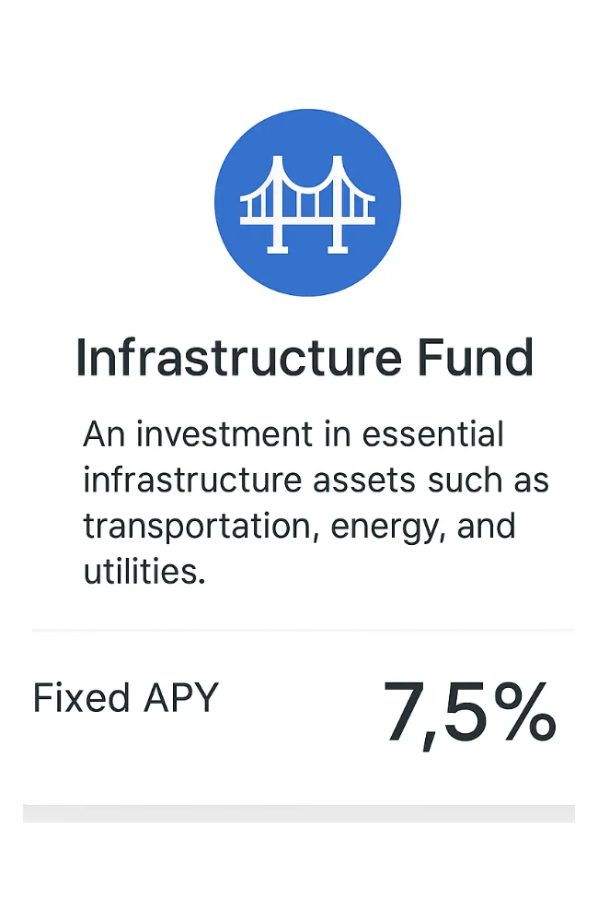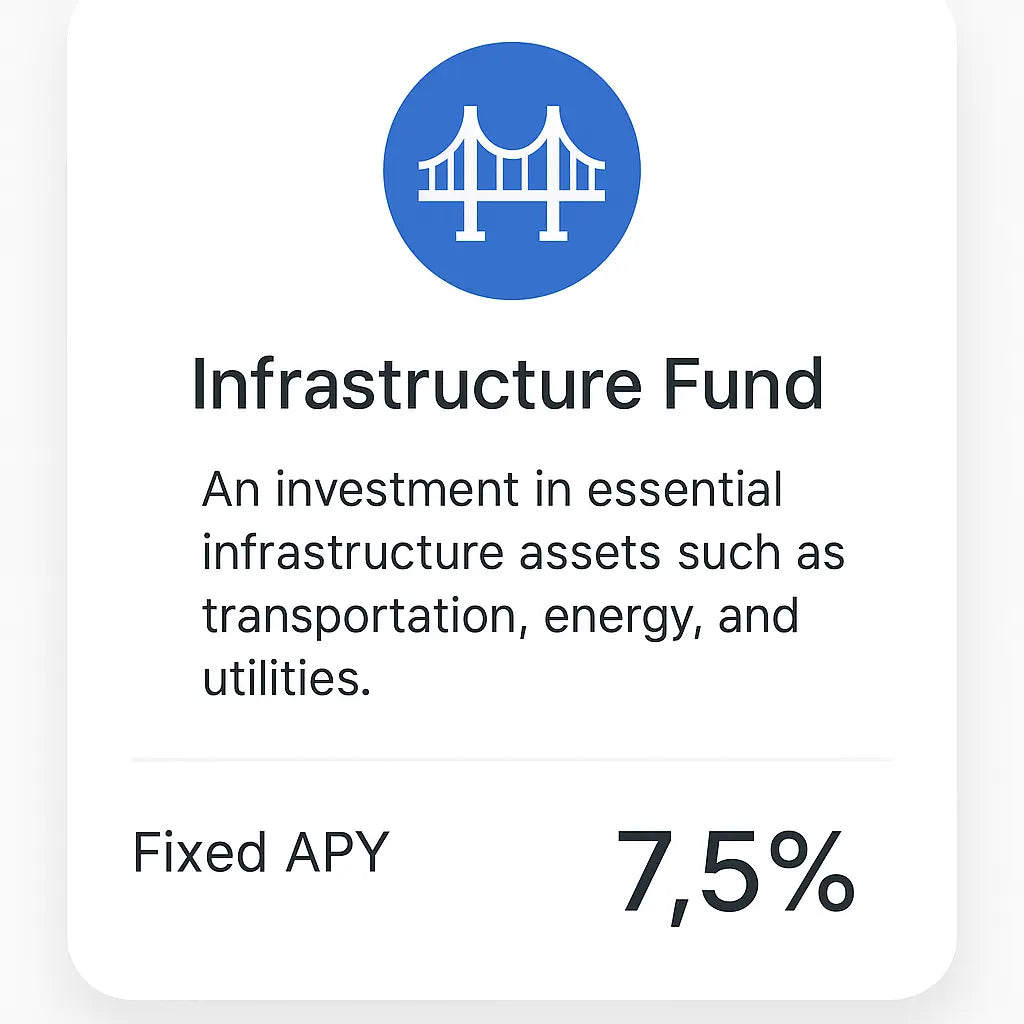TauFI
Infrastructure Funds
Infrastructure Funds
Couldn't load pickup availability
⛏ Coming soon
Yield from the world’s essential systems.
Tokenized infrastructure funds let investors access projects in transportation, energy, and digital infrastructure. Historically restricted to large institutions, TauLayer makes these long-duration, stable-return assets available on-chain.
- Predictable, asset-backed cash flow
- Stable, long-duration yield
- High institutional credibility
- Green and ESG-compliant potential
TauLayer can become the go-to gateway for tokenized, yield-generating infrastructure.
What Are Infrastructure Funds?
Infrastructure Funds are pooled investment vehicles that finance essential physical systems that support modern society. These include transportation, energy, communications, and utilities.
Unlike typical private equity or VC, infrastructure investing is about:
- Stability
- Long-term cash flow
-
Inflation protection
Key Asset Classes in Infrastructure
| Sector | Examples |
|---|---|
| Transportation | Toll roads, bridges, railways, ports, airports |
| Energy | Power plants, renewables (solar, wind), pipelines |
| Utilities | Water, electricity grids, sewage systems |
| Telecom | Cell towers, fiber networks, data centers |
| Social Infrastructure | Hospitals, schools, government buildings |
How Infrastructure Funds Work
1. Raise capital from LPs (pension funds, insurers, etc.)
2. Invest in long-term infrastructure assets or projects
3. Collect stable income through:
- User fees (e.g., tolls, tariffs)
- Long-term contracts (PPAs, leases)
- Government-backed revenue models
4. Distribute income to investors, often quarterly or semi-annually
Types of Infrastructure Fund Strategies
| Type | Risk | Return | Liquidity |
|---|---|---|---|
| Core/Core+ | Low | 6–9% | Illiquid |
| Value-Add | Medium | 8–12% | Illiquid |
| Greenfield (new projects) | High | 12–18% | Very illiquid |
Key Features
- Long-term horizons (10–30 years)
- Inflation-linked cash flows (e.g., regulated utility rates)
- Low correlation to public equities
- Capital-intensive, but stable and defensive
Why Tokenize Infrastructure Funds?
Tokenization makes these typically inaccessible assets available to a broader investor base:
| Traditional Barrier | Tokenized Advantage |
|---|---|
| $5M+ minimums | Fractional access ($100+) |
| Institutional-only | Retail via KYC + smart contracts |
| Locked for 20–30 years | Programmable liquidity windows |
| Regional barriers | Global access via wallets |
| No transparency | On-chain data + performance dashboards |
Infrastructure Funds on TauLayer — Use Cases
SOL-INFRA Access Token
✓ Backed by fiber networks + solar farms
✓ Fixed APY + partial revenue share
✓ Quarterly USDC distributions
✓ Optional liquidity via secondary markets
Who Invests in Infrastructure Funds?
- Sovereign Wealth Funds (e.g., GIC, ADIA)
- Pension Funds (e.g., CalPERS)
- Insurance Companies
- Private Infrastructure Managers (e.g., Brookfield, Macquarie)
- Family Offices
- Now: Tokenized RWA platforms like TauLayer
Share




